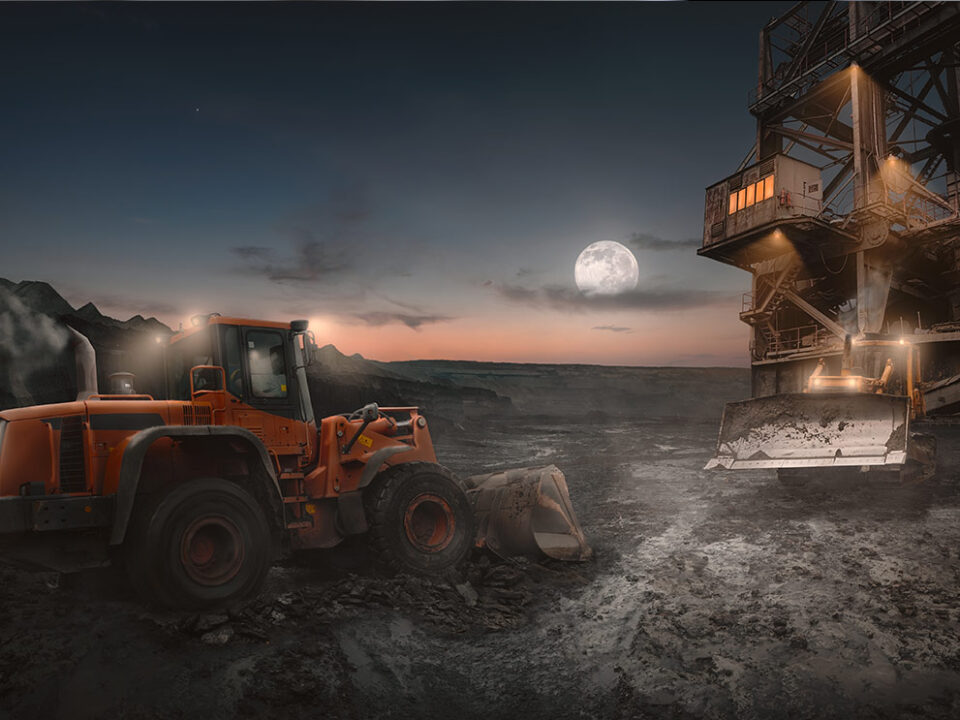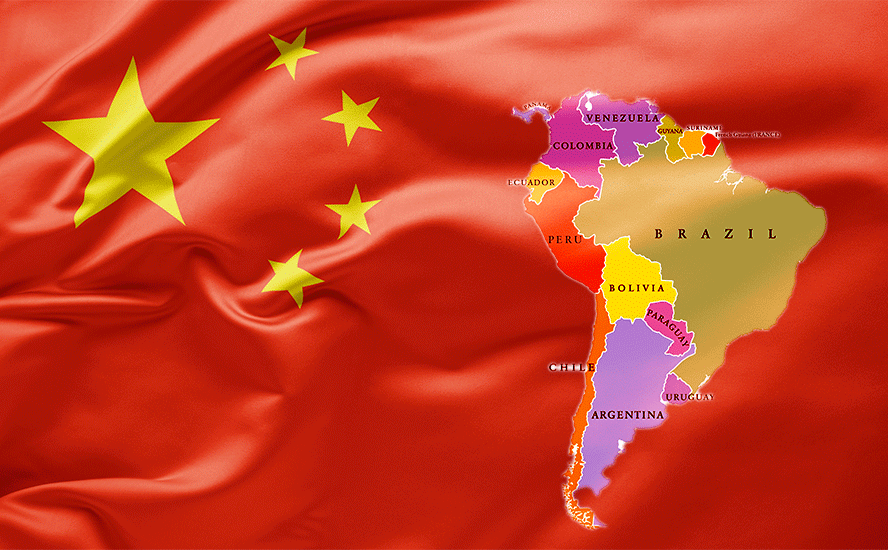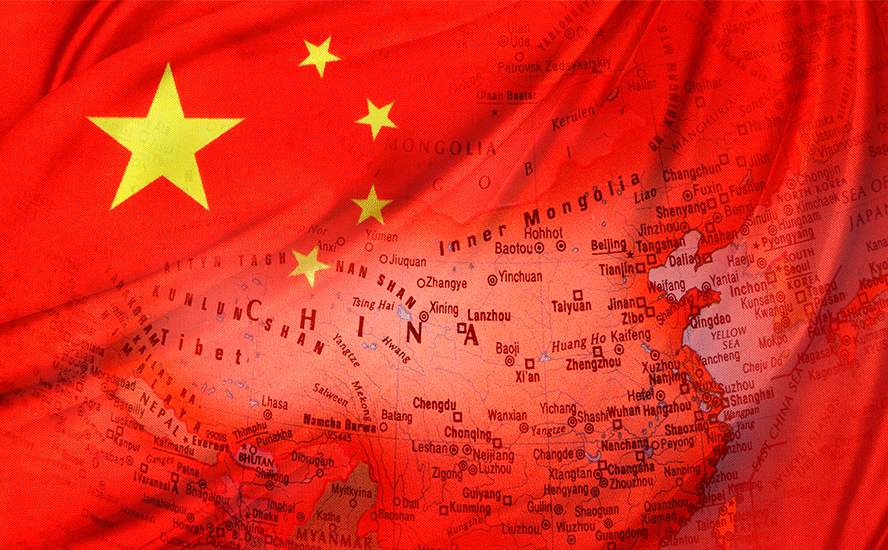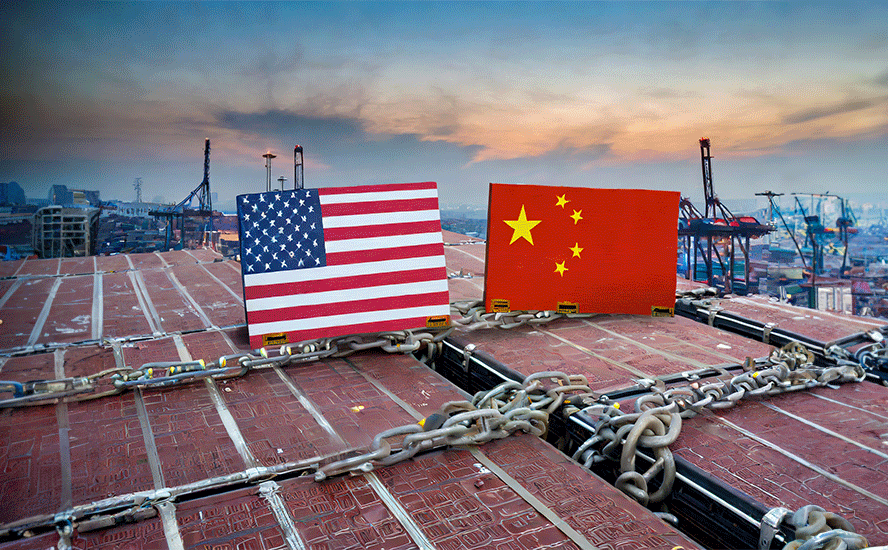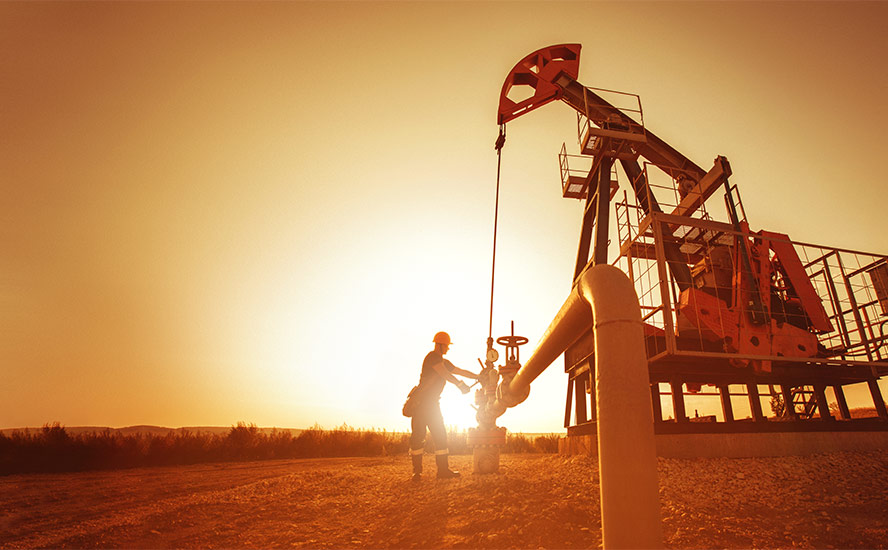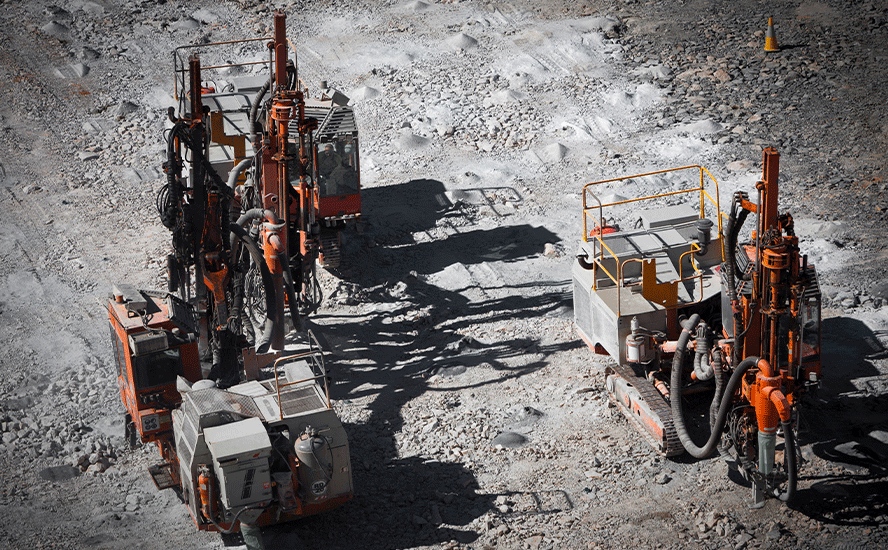The Big Lies perpetuated by Big Oil & Gas

2019.02.16
I always enjoy watching the Alberta government’s television ad on the Kinder Morgan Pipeline expansion. Presumably meant to appeal to the kid in all of us, the cartoonish commercial featuring sprouting flowers and flying blue doves says things like “Trans Mountain Pipeline means more money for roads, schools and hospitals”. It’s all very touchy-feely.
The $1.3 million advertising campaign “is a necessary investment in the battle for hearts and minds,” Premier Rachel Notley said last May, as though she were talking about the invasion of Normandy.
It’s not that I’m against Trans Mountain. In fact it makes a hell of a lot more sense than the LNG industry that is being ramped up in British Columbia, courtesy of the NDP/BC Greens coalition that has seemingly gone from protecting the working person and the environment, to supporting the oil and gas industry, as multinationals lick their chops at the prospect of pillaging the province’s water and natural gas resources, all in the pursuit of mega-profits.
I’m more galled by the cheek of the Alberta NDP in bilking taxpayers over a million dollars for pure propaganda – the kind of government-sponsored PR that has been used for decades to try and sway public opinion over to its side.
Propaganda is most effective when the intended audience doesn’t even know they’re being targeted. This is the case regarding a long-running campaign by the oil and gas industry to promote the benefits of natural gas development, while deliberately shielding from public view the negative aspects – especially the controversial practice of hydraulic fracturing aka fracking.
Ahead of the Herd has identified a treasure trove of documentation that shows a concerted attempt by big energy companies to lie, hide and mislead the public into thinking that fracking is good for the economy and has negligible effects on the environment – such as contaminating water supplies and causing earthquakes – despite evidence to the contrary.
To this we can add a Harvard University study published in 2017, concluding that oil and gas major Exxon knew about the damaging effects of climate change for nearly 40 years, yet did nothing to inform the public nor change its oil and gas extraction business model it knew would, at the very least accelerate global warming. Had it changed course then, and its Big Oil competitors followed suit, we may not find ourselves in the predicament we are in now – with just a reported 16 years left to stop the planet from warming beyond the point of no return.
Would it shock you to know that governments are in on it? Didn’t think so. We’ve reported on how the BC government, and the BC Oil and Gas Commission, deliberately hid studies that would put oil and gas development in northeastern British Columbia in a bad light. And we have “followed the money” behind BC pipeline protests to show how pipeline opposition is funded by large US-based philanthropic organizations like Tides and the Rockefeller Foundation, not to save the environment, but to keep cheap Canadian crude oil flowing north to south, rather than east to west where it could fetch a higher price at tidewater.
If you think natural gas is a good bridge to renewable energy and that fracking for gas is a safe, benign practice, I’m afraid you’ve been duped. This article will explain how Big Gas did it.
Frack EU
The modus operandi was a series of conferences organized by the oil and gas industry, first held in Calgary then in Krakow, Poland, followed by a meeting in Houston, on the themes of managing the public in order to prevent negative messaging from coming out about natural gas development and fracking.
The conferences were foreshadowed by a leaked Alberta government Briefing Note in 2011, documenting how the Canadian Association of Petroleum Producers (CAPP), a powerful industry lobby group, wanted provincial and federal governments to help the industry influence public opinion.
The strategy began in the early 2000s as a reaction to public opposition to coal bed methane (CBM) fracking – the first such developments in Canada as a result of The National Energy Board reporting that Canada’s conventional gas reserves were in decline. A joint venture between Encana Corp and Quicksilver Resources Canada initiated the CBM exploration program.
Among the complaints by landowners – who unlike in the US, do not own the subsurface rights – was that fracking was occurring near aquifers.
About 2,500 wells were drilled in 2004, and by the end of 2005, there were roughly 7,700 CBM wells in Alberta, 96% of which were in the Horseshoe Canyon coal zone southwest of Calgary, according to a report by Alberta’s Canadian Energy Research Institute (CERI). The report said about half of the CBM wells, to be developed in a first phase, would be drilled over 8.26 million hectares, with 2,500 to 5,000 completed annually. Investments in the Horseshoe Canyon CBM area alone were projected to be about $10 billion, and would last until 2065 when Horseshoe Canyon would be depleted.
Notably, the report only vaguely alluded to the concerns of landowners: “Stakeholders in this large development area are often unaccustomed to this type and level of activity and significant stakeholder interest and involvement is accompanying this development.”
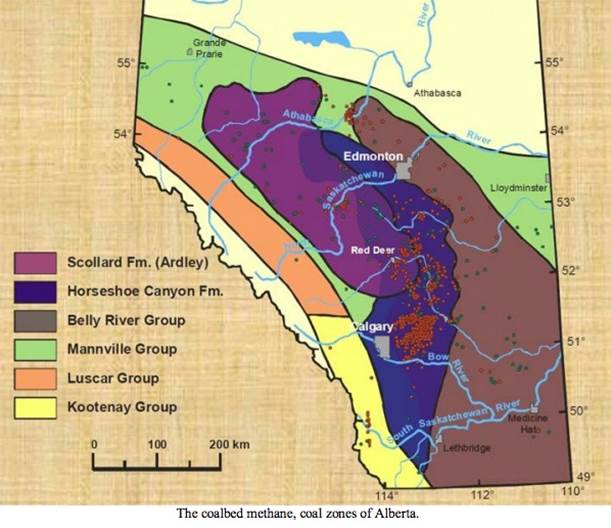
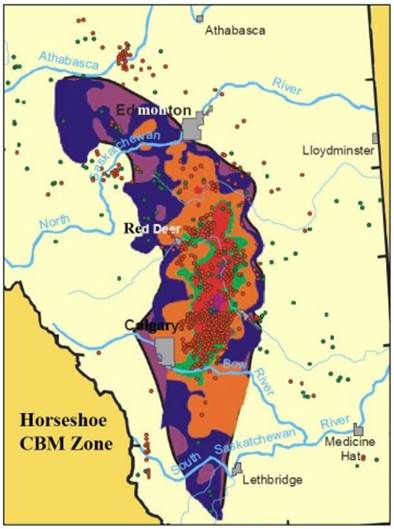
 It was at this point that the Alberta government became involved, through the now-defunct Energy Resources Conservation Board. Inspired by the 2002 annual report from the Energy Utilities Board (also no longer) – the governing body of the energy industry – EUB chair Neil McCrank came up with the idea of a provincial conference in Red Deer, the heart of CBM country.
It was at this point that the Alberta government became involved, through the now-defunct Energy Resources Conservation Board. Inspired by the 2002 annual report from the Energy Utilities Board (also no longer) – the governing body of the energy industry – EUB chair Neil McCrank came up with the idea of a provincial conference in Red Deer, the heart of CBM country.

The ‘Making Synergy Real’ conference set up Synergy Alberta, what was to become a network of over 80 “synergy groups”, supposedly a mixture of community groups whose mission was to achieve a “principled, balanced and sustained approach to resource development for Albertans”. In fact 80% of the Making Synergy Real conference attendees were from industry and government.
A 2012 background paper, “Frack EU: Unconventional Intrigue in Poland”, by the B.C. Tap Water Alliance (BCTWA), notes that Synergy Alberta was the result of what was becoming a public relations problem for both the energy industry and the Alberta government:
Serious public safety and sour gas incidents became disturbing and vexing issues for powerless landowners for a good decade or more previous, stories and accounts documented in Andrew Nikiforuk’s 2001 book, ‘Saboteurs – Wiebo Ludwig’s War Against Big Oil.’ The early 1990s marked the beginning of the synergy psychology applied to Alberta’s rural communities, and over a period of some ten years leading up to the 2002 conference, Albertans were getting a good dose of it. The 2002 conference was merely the metamorphosis of the ten-year-long synergy cocoon.
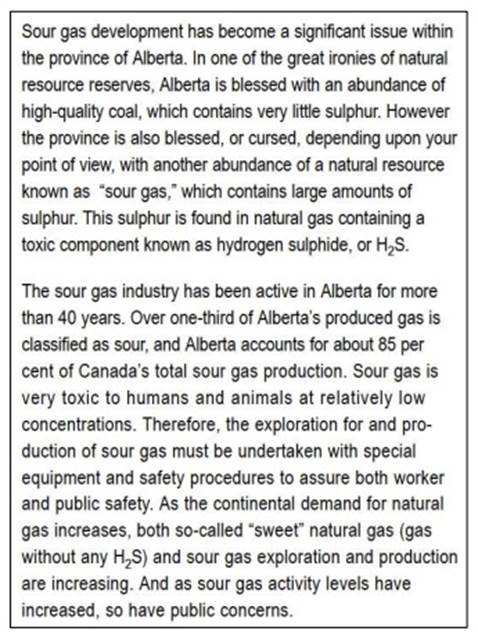
However it soon became clear that Synergy Alberta wasn’t really a way for Albertans to air their grievances about CBM fracking, but instead was a means for the petroleum sector to influence and control affected landowners.
One synergy group, the Sundre Petroleum Operators Group, at first was made up of oil and gas company reps operating around Sundre, and community members concerned about gas development and accidents. Nineteen years later, SPOG consisted of the local Chamber of Commerce, 17 petroleum companies, and eight petroleum service companies. (ie. No non-business interests)
Despite their lack of representation in Synergy Alberta, landowners began voicing concerns about inadequate regulations on the expanding CBM industry. The response from Alberta oil and its regular, the EUB, was to hold ‘Multi-Advisory Stakeholder Committee’ (MUC) meetings, beginning in late 2003, to address concerns.
According to the BCTWA paper, though, the MUC meetings were just “talk and frack” sessions, while coal bed methane fracking continued unabated:
Instead of landowners ‘taking on’ government in the old-fashioned, open confrontational, and demanding style, they were sidelined and diffused in synergy-style meetings. In addition to being sidelined politically, MAC participants had to sign confidentiality agreements, so any sensitive information presented at the meetings by government, industry and landowners could never be divulged publicly.
One disgruntled landowner, Jessica Ernst, wouldn’t be silenced. Claiming that her community’s drinking well water had been poisoned, she went to the media with her story and became the first Albertan to file a lawsuit against a major CBM company, the EUB, and Alberta Environment. Ernst even went on a three-day speaking tour with two other women – US landowners affected by fracking – to tell their stories and try to get answers from the government and the fracking industry about what had been done to her property and community.
Award-winning business journalist Andrew Nikiforuk summarizes what happened at the MAC meetings and how the industry-government nexus tried to gloss over groundwater contamination from coal bed methane projects. Below are a few excerpts from a 2006 article:
This month members of the Alberta Environment and the Energy and Utility Board tried to reassure rural Albertans that massive coal bed methane projects involving up to 50,000 wells over a 20-year period pose no threat to groundwater. Or to 600,000 Albertans dependent on country water wells. Now, government types told audiences in Strathmore and elsewhere that the province’s groundwater is in good shape. But here’s the truth. Budget cuts put an end to groundwater mapping and research in the province in the 1990s and for the last three years Alberta Environment hasn’t even entered digital data on more than 20,000 new water wells. Alberta now knows less about the state of its groundwater than it does about gas and oil reserves.
Then the government guys said that the contamination of water wells by leaking CBM wells was a nonevent. “Don’t worry,” they said. But methane from conventional wells and pipelines is already leaking into groundwater throughout the province. A 1993 study by Husky Oil found that 40% of 1300 wellbores were leaking gas. A 1996 study by the Canadian Association of Petroleum Producers reported that methane leaked more in areas where the density of exploration drilling increased. A 2002 groundwater study by the Canadian Council of Environmental Ministers, a pretty status quo group, concluded that the threat to groundwater from existing oil patch operations “represents a major challenge to governments and industry.” Last year Alberta Environment even asked local hydrogeologist Kathleen Rich to investigate groundwater contamination. But her “Study of the Migration of Natural Gas Into Ground Water From Leaking Oil and Gas Wells” hasn’t been highlighted any of the meetings. At their dog and pony shows the government boys didn’t talk much about hydraulic fracing either. Yet coal bed methane requires five to 10 times more fracing than conventional gas. – The Groundwater Debate, By Andrew Nikiforuk, October 2006.
By 2011 the fracking industry in Alberta and British Columbia, where fracking was taking place in the province’s northeast, was under pressure from environmental groups who had become aware of the negative effects of hydraulic fracturing, aided in part by anti-fracking documentaries like Gasland.
The result was a number of secret meetings involving three representatives of CAPP, coordinated by the energy ministries of BC, Alberta and Saskatchewan. Two of the reps were from Encana Corp, and the third was a registered lobbyist for Canadian Natural Resources and Shell Canada.
The upshot of the meetings, according to the BCTWA paper, was to “develop tax-payer funded public relations/advertisement schemes to ‘rapidly develop’ shale gas developments in western Canada on behalf of the petroleum industry. The recommendations were based on CAPP’s concerns claiming, in the leaked documents, that environmental ENGO’s were misdirecting the public.”
Notable in the recommendation was the backing of the Water and Technology Collaboration Working Group, created through the New West Partnership, an agreement between the three western provinces (BC, Alta & Sask), to set in motion a number of deregulatory and streamlining directives.
The aim of the New West Partnership was to harmonize oil and gas regulations with Alberta’s, in line with the three provinces sharing a border with the Western Sedimentary Basin, and to mesh with the concept, introduced in 2009, of a US-Canadian Western Energy Corridor.
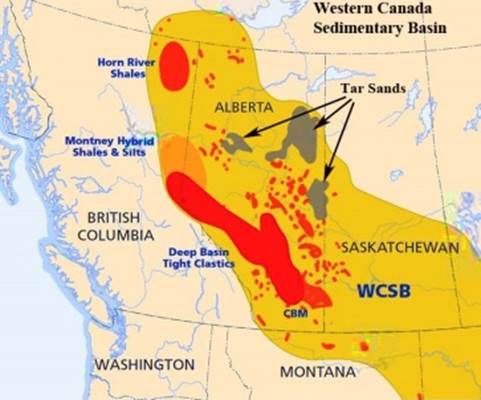
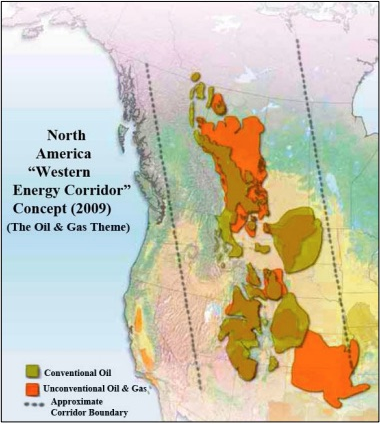
Meanwhile, industry and provincial governments appeared to be drawing closer.
BC’s then-Minister of Energy, Rich Coleman, granted a 20-year license to Talisman Energy, for the annual withdrawal of 78 million cubic meters of free water from the Williston Reservoir on the Peace River – the province’s largest body of fresh water. The environmental blog DeSmog Canada notes that is the equivalent of 31,000 Olympic-sized swimming pools, drained for the purpose of fracking BC’s northeastern gas fields. The CBC reported the water grant was approved without public consultation.
In September 2011, industry reps gathered in Krakow, Poland, where a natural gas development industry was starting to get rolling, in an effort to diversify from nuclear power. Two unconventional shale gas conferences were held within 10 days of each other, both public relations-themed.
Among the key speakers was Dr. Kent Moors, a political science professor from Pittsburgh’s University of Dufresne. Considered an oil and gas industry expert, Moors reportedly joined the US State Department’s Global Shale Gas Initiative as a policy advisor, and advised the governments of the US, Russia, Kazakhstan, Iraq, Kurdistan, Bahamas and Uganda on energy policy. Moors also “advised shale gas, coal bed methane, tight gas, shale oil and oil sands projects in the Marcellus, Barnett, Haynesville, Woodford, Fayetteville, Powder River, Piceance and Monterey basins in the U.S., the Athabasca, Alberta Bakken, Horn River and Montney basins in Canada, and unconventional gas projects in Poland, Germany and Morocco,” according to the BCTWA paper.
Scraping from various websites Moors contributed to, the paper ascertained that Moors sees Poland as the gateway to expanded fracking in Europe (there are shale gas reserves in Germany, Hungary, Austria, France, the Baltic countries, Sweden, and the UK). He noted that while France and Germany have movements opposed to fracking for shale gas, “Poland, however, has no significant opposition to drilling.”
In another report about the Poland conference, Moors writes:
I am leaving for Krakow, Poland, early this morning. During this trip, I will present what we have learned thus far in North American shale gas development before a meeting organized by the Polish government and chaired by President Bronisław Komorowski. What will take place in that room, however, is more than a simple exchange of data. The government in Warsaw is about to open up these shale plays to major investment. Before they do so, however, the authorities must set regulations for drilling, determine what environmental impact will take place, weigh the potential economic benefits and problems, and discuss how this newfound energy wealth is going to change lives. Turns out that’s pretty much my job in Krakow; I will be advising on the policy challenges in each of these areas.
The former Canadian Natural Resources Minister, Joe Oliver, also reportedly attended the first Krakow conference. Oliver was a vocal proponent of the Alberta oilsands and the Enbridge Northern Gateway pipeline project that was subsequently axed by the Trudeau Liberals.
Things got even more interesting in the second Krakow conference, which clearly laid out the industry’s intention to sway public opinion in its favor. From the program’s opening statement:
As operating companies move towards pilot projects and edge closer to commercial unconventional gas production, the bottlenecks are increasingly being identified as nontechnical. Environmental concerns about water handling, storage, and disposal and aquifer contamination are entering the public arena, attracting widespread attention, aided by mainstream media coverage. How will the industry overcome the communication challenges in order to move forward? What needs to be done to foster public acceptance of unconventional gas? How can we prove that unconventional gas drilling is safe and the risks are negligible? These questions have shaped the agenda of the European Unconventional Gas Summit, and we will look forward to hearing your thoughts and watching the debate develop when we meet in Krakow.
A presentation by London-based crisis communications experts Patrick d’Ancona and Chris McMahon, titled ‘Earthquakes, elections and environmentalists: communications shock and awe in the unconventional gas sector’, tried to answer such questions as “How can the industry make the unconventional conventional?” in an attempt to normalize fracking.
The Gasland documentary was criticized as re-awakening the petroleum industry’s “image problem” by portraying pro-fracking industry people as untrustworthy, then a different approach was suggested:
[McMahon’s employer] M:Comm said that Gasland failed “to engage in a sensible debate with the industry,” and in response industry should have a “neutral, soothing, female voice for reassuring maternal feel, not ‘big, bad oilman.’ “The industry should counter by showing video reels “of unspoilt landscapes and happy families” with “footage of families with young children,” emphasizing that “natural gas provides energy security, 2.8 million jobs in the sector,” and how “fracking is the obvious route to employment, energy security and clean energy.”
With respect to earthquakes, a slide stated that while there have been concerns about fracking impacting an area’s geology, “no proof has been offered” despite re-occurring seismic events in the Horn River and Montney shale zones of BC and studies done in the United States since the 1960s that proved the correlation. The deputy Environment Minister of Poland concurred with the PR presentation, saying that tests in the province of Pomerania did not cause earthquakes.
The real earth-shaker though regarding the blatant attempts by industry and government to silence criticism happened in Houston, Texas, at the end of October, 2011. The conference called for a “united front” to deflect bad publicity from the media, NGOs and the public, about unconventional (shale) gas production, especially given the growing power of social media. From the conference website:
The unconventional oil & gas industry now faces scrutiny on a daily basis from the media, NGOs and the public on issues relating to claims about the impact of hydraulic fracturing on water resources. Additionally, the power of social media is allowing misinformation and the environmentalist agenda to be spread at an increasingly rapid rate. The need for a united front to project a transparent and accurate account of the process has never been more important to ensuring the sustainability of the industry and protect it from calls for intrusive regulation. Because of this, devising a comprehensive media and stakeholder relations strategy, leveraging mass media, social media and grassroots community support to overcome public concern over hydraulic fracturing has become of central importance to the commercial viability of unconventional oil & gas operators.
To counter the criticism, Matt Carmichael from Anadarko Petroleum, a former Marine, reportedly told the conference that industry should borrow a few pages from the US Military’s psychological operations (PSYOPS) manual for dealing with “insurgents”, as Carmichael referred to Americans opposed to fracking:
If you are a PR representative in this industry, in this room today, recommend you do three things. These are three things that I’ve read recently that are pretty interesting:
- Download the U.S. Army/Marine Corps Counterinsurgency Manual (in the audio one can hear some of the delegates instinctively chuckling after he said this, and there follows a slight pause by Carmichael who hears them) … because we are dealing with an insurgency. There’s a lot of good lessons in there and coming from a military background, I found the insight in that extremely remarkable.
- With that said there’s a course provided by Harvard and MIT, twice a year, it’s called ‘Dealing with an angry public’. Take that course. And tie that to the Army/Marine Corps Counterinsurgency Manual. A lot of the officers in our military are attending this course. It gives you the tools, it gives you the media tools on how to deal with … a lot of the controversy we as an industry are dealing with.
- Thirdly, I have a copy of Rumsfeld Rules (a few more chuckles from the audience). If you are all familiar with Donald Rumsfeld. That’s kind of my bible by the way I operate.
The BCTWA paper states there were “PSYOP-inspired tactics in Pennsylvania, sending threatening letters to the citizens of Mt. Pleasant Township in hopes of dividing the community, and attempting to sway the township supervisors to do industry’s bidding.”
Articles in DeSmog and Rolling Stone have reported that the use of PSYOPs is a violation of the Smith-Mundt Act of 1948, passed by Congress to prevent the State Department from using Soviet-style propaganda techniques on US citizens. PSYOPs are only supposed to be used on hostile foreign groups according to the Defense Department’s own definition.
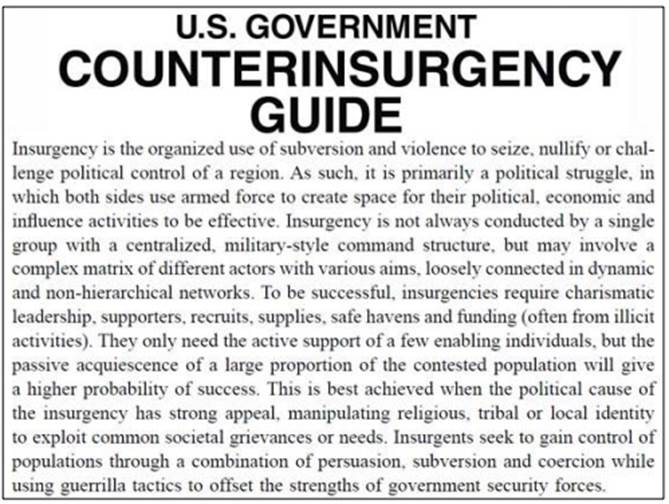
The oil and gas industry’s military-inspired strategy for masking the effects of fracking didn’t just involve lying to the public and hiding scientific truths such as methane escapes and groundwater poisoning. There were also lobbyists.
The Marcellus Shale Coalition spent $1.1 million in 2010 as anti-fracking groups ramped up in the northeastern US. Between them the MSC, Pennsylvania Independent Oil and Gas Association, and 22 other companies spent $3.5 million to lobby lawmakers and state officials regarding Marcellus shale extraction, according to the BCTWA paper.
What Exxon knew
Exxon Mobil is the fifth largest oil company in the world by revenue and the second largest behind Russia’s Gazprom, according to Investopedia’s rankings.
As of Friday Exxon’s market cap was $303.6 billion.
With that kind of heft, Exxon has the capability to move not only petroleum markets, but public opinion. In 2017 Harvard University reported the results of a study that wanted to know how much the oil major has known about climate change over the past several decades.
The results found that for nearly 40 years, Exxon publicly questioned the dangers of climate change despite scientists and executives employed by the company acknowledging the growing threat internally.
“We conclude that ExxonMobil misled the public,” the researchers wrote in the peer-reviewed study reported on by CNN Money. Exxon dismissed the study as inaccurate, paid for and written by activists. The study looked at 187 public and private communications from Exxon about climate change between 1977 and 2014. It found the more public the communication to the public was, such as advertorials, the more doubt Exxon expressed about climate change, according to CNN. By contrast, 80% of internal communications acknowledged that global warming is both real and human-caused, versus just 12% of opinion editorials published in the New York Times.
In May 2017, 63% of Exxon’s shareholders supported a proposal to disclose how the changing climate could hurt the company. In September 2017 the cities of San Franciso and Oakland sued Exxon and other oil companies, demanding that they pay billions to cover the costs of sea walls and other structures to prevent rising sea levels caused by climate change. Last year a federal judge dismissed the oil giant’s lawsuit trying to stop New York and Massachusetts from doing the same thing as the Harvard study, probing to see whether it covered up knowledge of climate change and lied to investors and the public about it.
Big protests, big money
To be fair, the oil and gas industry isn’t the only side using propaganda to further its purposes. Its opponents are guilty of the same thing. Last year we reported on ‘The Tar Sands Campaign’.
Launched in 2008 by the Rockefeller Brothers Fund, the William & Flora Hewlett Foundation and the Tides Foundation, the Tar Sands Campaign is an international initiative designed to stop expansion of the Canadian oil industry, reduce demand for Canadian oilsands crude in the US and stop or stall pipeline and port construction. The goal is to shut down the export of oil from Western Canada by pipeline, tanker and rail.
The campaign is “a small part of a very large, global effort to foster a major shift in investment capital away from fossil fuels and towards renewable energy. This effort also seeks to improve energy efficiency and the energy security.” But the effort isn’t small.
Research by Vancouver-based researcher Vivian Krause reveals that between 2009 and 2016 the Tides Foundation made at least 400 payments for $36 million to over 100 organizations in Canada, the US and Europe. Its website boasts $158.4 million in US grants and $65.2 million in international grants in 2016 alone.
All of the major environmental organizations in Canada that regularly protest pipelines and tanker traffic have been partially funded as part of the Tar Sands Campaign. These include the defeated Northern Gateway and Energy East pipelines, the reversal of Line 9, Kinder Morgan’s Trans Mountain pipeline, and the Fuel Quality Directive in Europe which requires a 6% reduction in the greenhouse gas intensity of transport fuels by 2020.
The campaign seeks to demonize Alberta oil sands as the “dirtiest” oil in the world (ie. most harmful to the environment) through negative imagery of oilsands mining rather than cleaner steam-assisted gravity drainage (SAGD) operations, while also diminishing or ignoring industry improvements.
For more read our Following the big money behind big pipeline protests
Provincial coverups
We know that the BC government has lied to British Columbians or tried to prevent information that would reflect negatively on the oil and gas industry, either directly or through its proxies.
There is evidence of a government cover-up of the risk fracking presents to dam safety. Documents released by BC Hydro under Freedom of Information legislation showed that BC Hydro officials in 2009 became alarmed at a coal-bed methane operation near its Peace Canyon Dam – 23 km downstream from the W.A.C. Bennett Dam, the world’s seventh largest hydro reservoir. The operation involved drilling and fracking coal bed methane wells to increase their permeability.
“BC Hydro believes that there are immediate and future potential risks to BC Hydro’s reservoir, dam and power generation infrastructure as a result of this,” Ben Parfitt from the Canadian Centre for Policy Alternatives (CCPA) quotes BC Hydro’s former chief safety, health and environment officer, Ray Stewart. From Parfitt’s article:
Stewart went on to warn that the “potential effects” of such actions could be natural gas industry-induced earthquakes that were greater in magnitude “than the original design criteria for the dam.”
This means that BC Hydro, a BC government Crown corporation, has known since 2009 about the earthquake risks caused by fracking, yet did nothing.
We also know that BC’s Oil and Gas Commission suppressed information that would show that natural gas companies working near Fort Nelson failed to take measure to protect the boreal caribou.
The federal government had declared the boreal caribou a threatened species. Its recovery plan included increased rules that energy companies should follow in order to protect the caribou herds. But an audit that looked at how oil and gas activities around the Fort Nelson area stacked up against the new rules, found that companies repeatedly broke the rules – including constructing well pads too large, and building roads in long, straight lines that allow wolves to easily spot the caribou. The audit was submitted to the Oil and Gas Commission, which sat on it for four years; a copy was passed to the CCPA, which went public with it.
For more read our LNG: Another environmental disaster coming to BC
Federal collusion
Even more interesting is the Canadian government’s seeming collusion with the BC government over a joint strategy to reject or downplay oil pipelines, while instead supporting a liquefied natural gas industry.
There appears to be a policy shift at the provincial and federal government levels, that natural gas is the way forward, and the oil sands shouldn’t be encouraged to expand. Natural gas is seen as cleaner than oil, particularly when it is transported. A natural gas spill is invisible (though no less damaging to the environment); an oil spill evokes ghastly images of ruined beaches, dead seals and oily sea birds.
This explains the enthusiasm with which the BC premier and the Canadian prime minister greeted the LNG Canada decision. It is more politically palatable. Unlike the disastrous Kinder Morgan pipeline, killed by BC politicians and bailed out by the federal government which paid Kinder Morgan $4.5 billion for it, politicians don’t expect major protests against a natural gas pipeline.
We can’t prove collusion, but the intention seems clear. Is it a coincidence that the Trudeau Liberals rejected the Enbridge Northern Gateway Project, while at the same time banning oil tanker traffic on BC’s northern coast, but encouraged Petronas’ $11.4 billion LNG project near Prince Rupert? We don’t think so. Recall that Trudeau’s quid pro quo was to support the Kinder Morgan pipeline expansion project instead of Northern Gateway, thus placating the oil industry. Then he struck a deal with Canadians in allowing Pacific Northwest LNG but slapping a carbon tax on provinces that don’t already have one, to meet Canada’s carbon emissions targets. Just over a year after Petronas pulled the plug on Northwest LNG, LNG Canada was approved, helped by a $275 million contribution by the federal government. The BC government got what it wanted: the cancellation of the Trans Mountain Pipeline and federal funding and support for an LNG industry.
Conclusion
Nobody likes a liar, especially when the lie has consequences. Unfortunately, residents of BC and Alberta have not been told the truth about natural gas extraction since coal bed methane extraction began in the early 2000s.
We were told that natural gas was clean, much better than coal: the answer to lower global carbon emissions. We were lied to about that. We were told that fracking was benign to the environment and that we should support the industry because it provided jobs, prosperity and energy security. They were lying to us about that too.
Those of us who complained were treated like criminals, or in the US, as “insurgents”, lumped into the same category as foreign combatants, in violation of United States law. Fracking companies were urged to consult the Army/Marine Corps Counterinsurgency Manual, to deal with doubters through PSYOPS, otherwise known as psychological warfare.
But wasn’t the government there to protect the public interest against the bad old fracking profiteers? No, the provincial governments were on their side, as we saw in Synergy Alberta, the kangaroo court-type MUC meetings, and the example of Rich Coleman giving away 31,000 swimming pools worth of free water from BC’s largest reservoir in order to frack northeastern BC.
Surely, if you’re against oil and gas, pipelines, fracking, etc you are protesting in good conscience, right? Sure, but even here, protesters are being lied to. They might think they’re gathering on Burnaby Mountain to save the environment, but they’re actually sending a message that will help the US oil industry at the expense of Canadian oil producers. The big US money that funds pipeline protests wants to keep Canadian oilsands crude cheap, so that refineries can profit. While it can’t be proven, we also think the big money wants to shut down the oilsands, not for environmental reasons, but in case the US needs it later, when it runs out of shale oil. When US oil companies do come for the ‘sands,’ the north-south pipelines will exist to ship it.
Big Gas, Big Oil, Big Government, Big Philanthropy have all been telling you BIG LIES about the effects of oil and gas on our health, the environment, about climate change, and even about why you are protesting pipelines. So, who can you rely on to tell you the truth?
You’re reading it, at Aheadoftheherd.com.
Richard (Rick) Mills
Ahead of the Herd is on Twitter
Ahead of the Herd is now on FaceBook
Ahead of the Herd is now on YouTube
Legal Notice / Disclaimer
This document is not and should not be construed as an offer to sell or the solicitation of an offer to purchase or subscribe for any investment. Richard Mills has based this document on information obtained from sources he believes to be reliable but which has not been independently verified. Richard Mills makes no guarantee, representation or warranty and accepts no responsibility or liability as to its accuracy or completeness. Expressions of opinion are those of Richard Mills only and are subject to change without notice. Richard Mills assumes no warranty, liability or guarantee for the current relevance, correctness or completeness of any information provided within this Report and will not be held liable for the consequence of reliance upon any opinion or statement contained herein or any omission. Furthermore, I, Richard Mills, assume no liability for any direct or indirect loss or damage or, in particular, for lost profit, which you may incur as a result of the use and existence of the information provided within this Report.
Legal Notice / Disclaimer
Ahead of the Herd newsletter, aheadoftheherd.com, hereafter known as AOTH.Please read the entire Disclaimer carefully before you use this website or read the newsletter. If you do not agree to all the AOTH/Richard Mills Disclaimer, do not access/read this website/newsletter/article, or any of its pages. By reading/using this AOTH/Richard Mills website/newsletter/article, and whether you actually read this Disclaimer, you are deemed to have accepted it.



